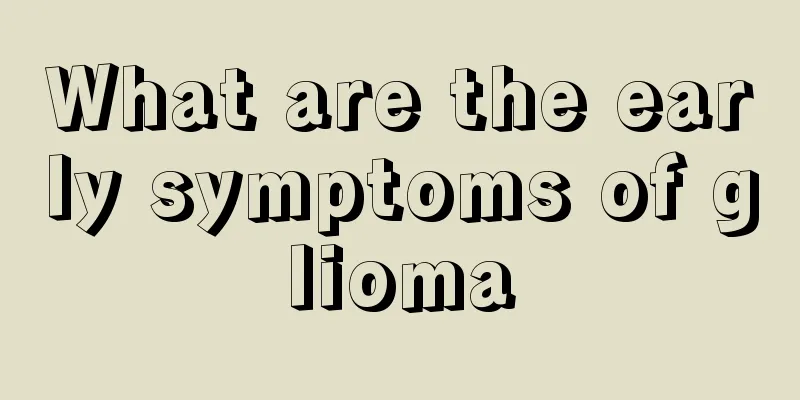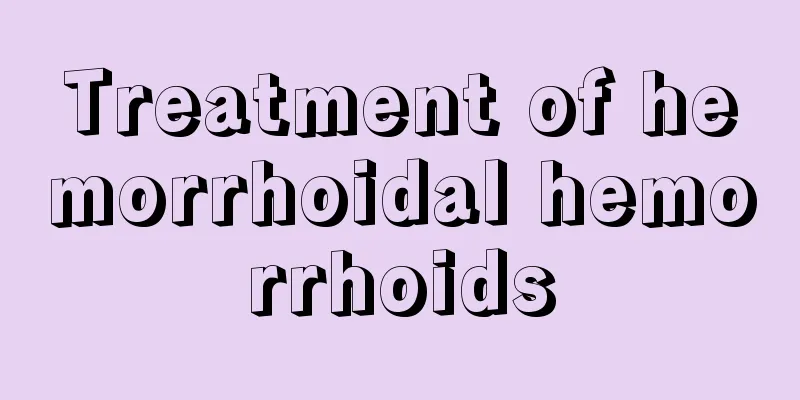What are the early symptoms of glioma

|
Early detection and treatment of gliomas have a great relationship with the cure rate. How can we achieve early detection and early treatment in our daily lives? In fact, as long as we know more about the symptoms of gliomas, we will be alert to gliomas and seek medical treatment in time. Let's take a look at the early symptoms of gliomas. 1. Headache: About 30% of glioma patients experience headaches, and about 70% of them experience gradually worsening headaches. This type of headache is mostly non-specific and only intermittent, mostly located on the same side of the lesion, and mostly manifests as dull pain rather than throbbing pain, which is sometimes difficult to distinguish from tension headaches. Brain gliomas usually present as forehead pain, while cerebellar gliomas mostly present as occipital and neck pain. If the tumor is too large and produces high intracranial pressure, the headache will be significantly aggravated, sometimes waking up from sleep due to pain, and significantly aggravated during vigorous head movement, sometimes accompanied by nausea and vomiting. If the intracranial hypertension persists for too long, there will also be symptoms of decreased vision. 2. Epileptic seizures: About one-third of glioma patients show epileptic seizures, and the incidence increases to 50-70% during the course of the disease. Half of the epilepsy is localized, while the other half is systemic. Slow-growing low-grade gliomas are particularly prone to epileptic seizures, while the chance of glioblastoma causing epileptic seizures is very low. Oligodendrogliomas cause epilepsy in about 75-95%, astrocytomas in about 65-70%, and glioblastomas in about 37-50%. The prognosis of high-grade gliomas with epileptic seizures is often better than that without epileptic seizures. The probability and manifestation of epileptic seizures caused by gliomas in different parts are not the same. In addition to causing systemic seizures, epileptic seizures caused by tumors in different parts often have their own characteristics: for example, frontal lobe gliomas can cause paroxysmal convulsions and aphasia in the contralateral limbs; medial temporal lobe tumors are often accompanied by olfactory hallucinations, paroxysmal fear, and palpitations, while parietal lobe tumors can cause hemisensory disorders. 3. Mental changes: About 15% to 20% of glioma patients have changes in mental state as the first symptom, mainly manifested in changes in emotions, personality, cognitive function, calculation ability and memory. 4. Focal neurological symptoms: The different locations of the tumors can also cause corresponding neurological deficit symptoms, such as limb paralysis, sensory impairment, aphasia, unsteady gait, hemianopsia, alexia and agraphia. 5. Cranial nerve symptoms: Damage to different cranial nerves will produce corresponding neurological symptoms, such as decreased vision, diplopia, strabismus and facial paralysis. Once a glioma is diagnosed, it should be treated promptly without delay, lest the best treatment opportunity is lost. Studies have shown that surgical treatment is still the first choice for the vast majority of gliomas. |
<<: What are the typical symptoms of glioma
>>: What tests should be done for pituitary tumors
Recommend
How to speed up the shedding of eyebrow scabs?
Nowadays, people love beauty very much, especiall...
Postoperative care for rectal cancer
Everyone must be curious about the postoperative ...
Can the cervical curvature be straightened? It is difficult to recover!
If the cervical curvature becomes straight, it is...
Calories in kelp
You won’t get fat after eating kelp. Kelp is rich...
The skin on the finger joints turns pale
The whitening of the skin on the finger joints ma...
What is the correct way to wash underwear
Underwear is something we wear every day and is i...
Can people with thyroid cancer exercise?
Most thyroid cancer patients can exercise, but so...
T4 high
Some people will have high thyroid function T4 du...
What causes pancreatic cancer
Pancreatic cancer is usually caused by a combinat...
How to treat sweat stains under the armpits
Pityriasis versicolor is a superficial fungal dis...
What kind of manicure looks good
For many female friends, manicure is something th...
What examinations should liver cancer patients take? Three main examination items for liver cancer
What tests should liver cancer patients undergo? ...
What are the good treatments for lung cancer? It is recommended to use three methods to treat lung cancer after diagnosis
The decline in air quality and the increase in th...
What are the traditional Chinese medicine treatments for rheumatoid arthritis
Speaking of rheumatoid arthritis, it is a very co...
Will chemotherapy for malignant hydatidiform mole cause hair loss?
Chemotherapy for malignant hydatidiform mole ofte...









